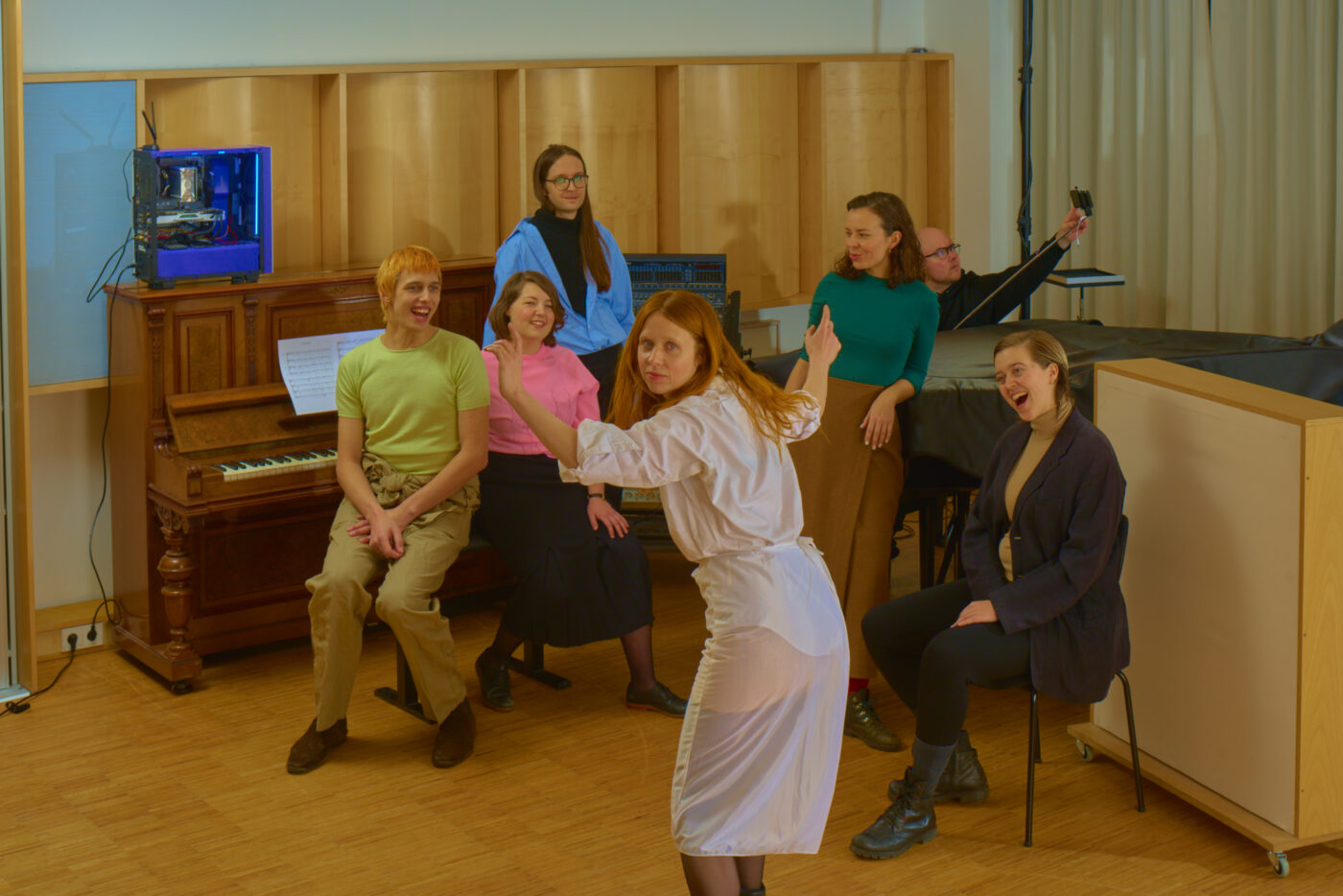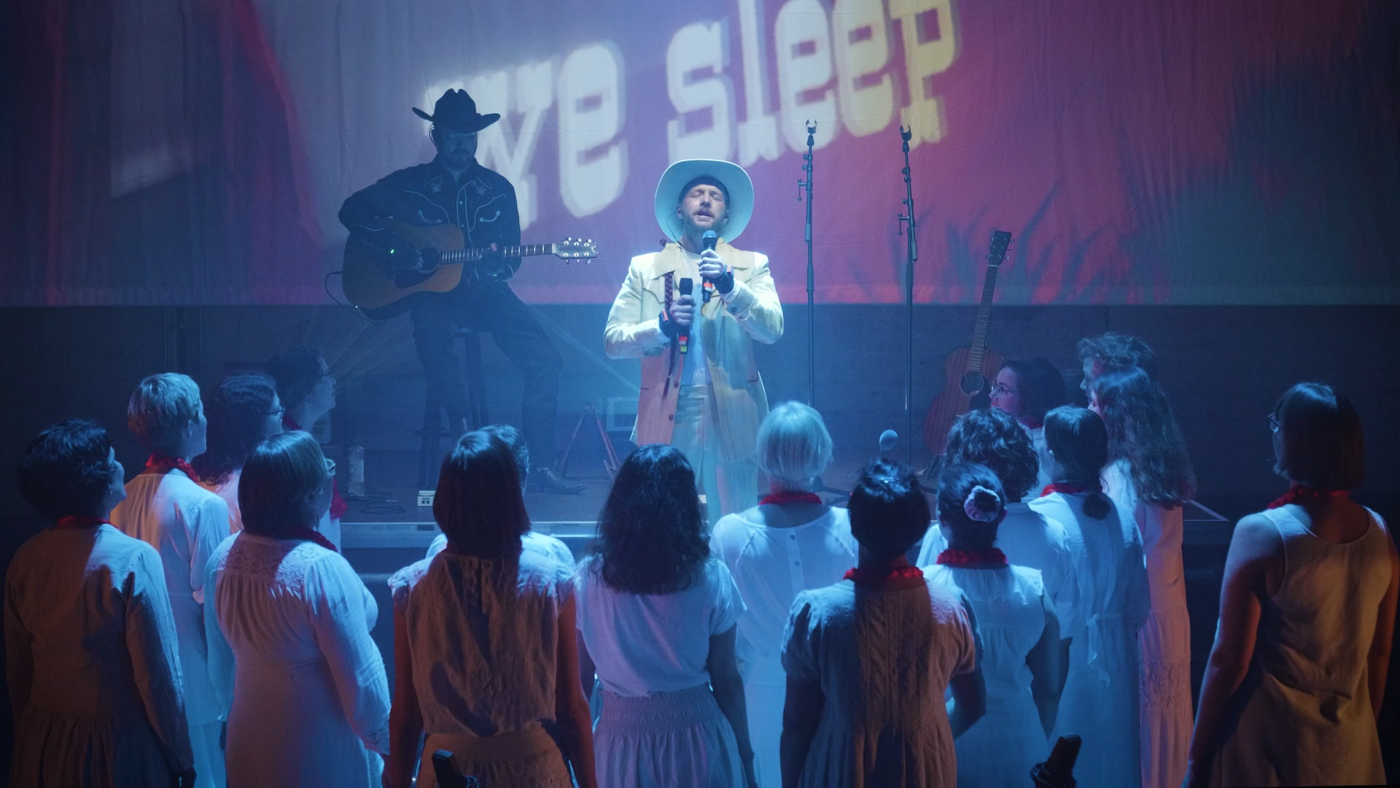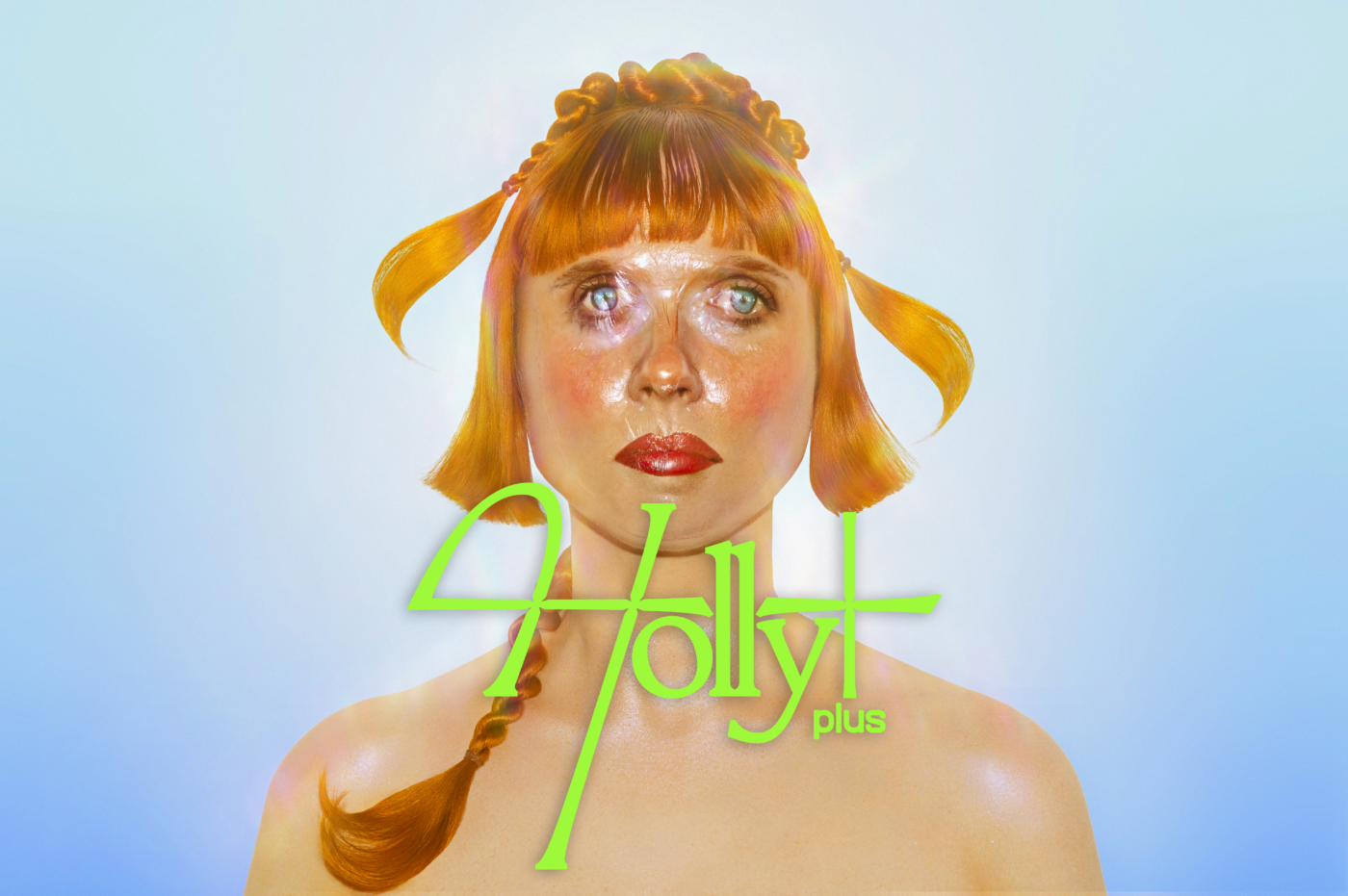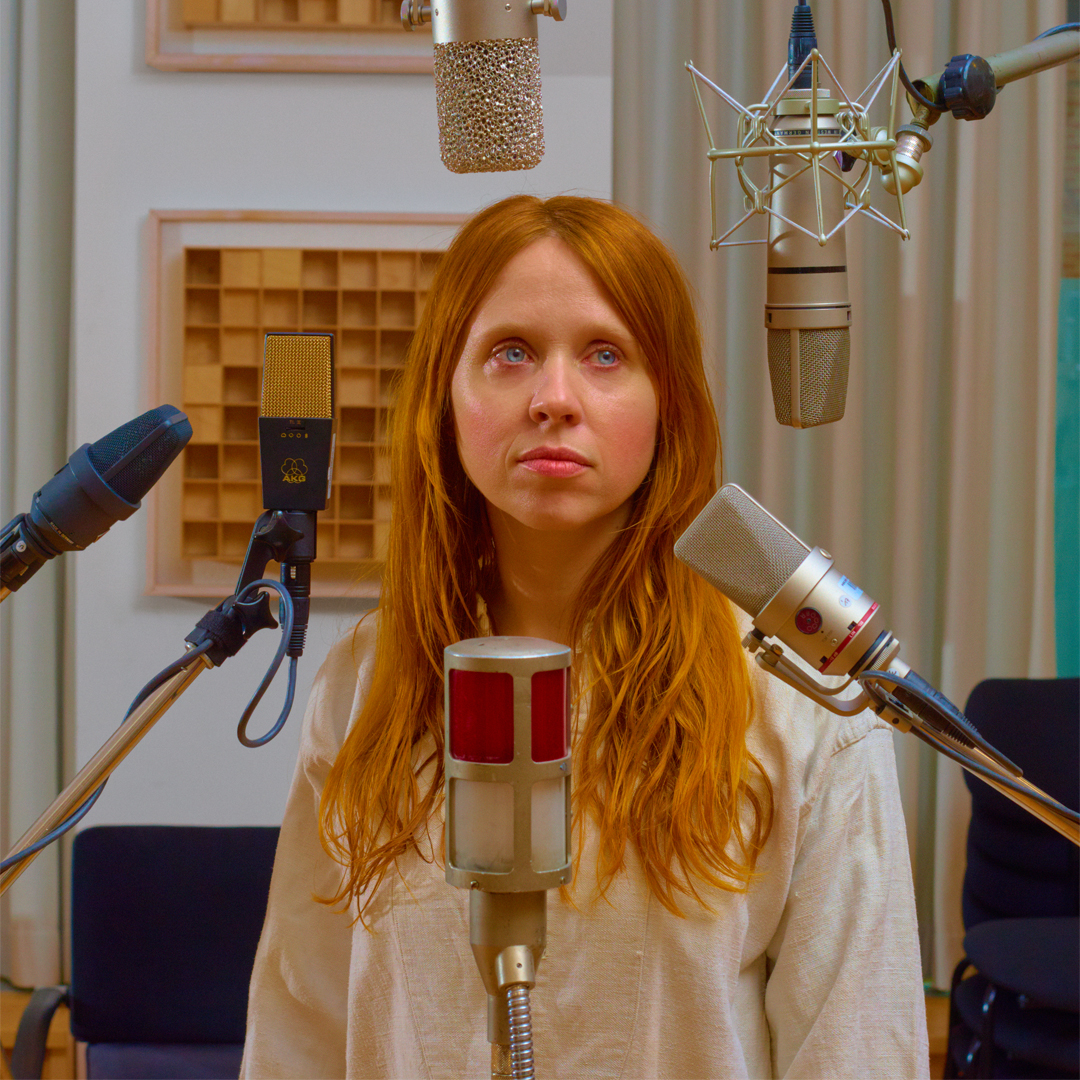


“There is nothing new under the sun, but there are new suns.” —Octavia Butler

11 minute experience, or the time it takes to go for a spin around the block.
As an artist and musician with experience in machine learning, Holly Herndon untangles the dynamics between public and private personas, revealing the complexities of navigating identity in the age of artificial intelligence (AI). Through her innovative perspective on chimeric modeling and experimental music, she reveals a future where technology augments artistic practices, offering unique and captivating experiences for listeners and readers. In the following interview, Herndon delves into the concept of “spawning” and its profound impact on her creative projects.
A Q&A WITH HOLLY HERNDON
Luz Maria Orozco: Your musical practice has often involved the concept of “spawning.” Can you discuss what it means to you and how it has influenced your approach to your creative projects? How have you seen your practice with “spawning” evolve over time, and how has that definition changed along the way?
Holly Herndon: I have been experimenting with machine learning since around 2016, and from the beginning it was clear that these tools were going to be very influential on how music is made and distributed, and were very strange in comparison to things we are used to. My partner Matt and I came up with the term “spawning” to describe generating new music based on training data and to help distinguish this new technique from imperfect analogies like sampling. Spawning shares some similarities with sampling as it creates new works from old works, but unlike sampling it is not a one-to-one reproduction of sounds; rather, it is learning stylistic features of sounds in order to be able to produce infinite new sounds in that style. So rather than sampling a voice recording and changing the context surrounding it, with spawning you can learn the features of a voice and produce infinite songs with that voice. It is spawning new instances of a person or thing.

[ID: A group of people are gathered in a studio recording room surrounded by pianos and musical devices. Holly, a woman wearing a white dress, is looking at the camera while she conducts the singing ensemble.]
When you are training a machine learning model the first question you ask yourself is, “What data should I use?” While preparing the album PROTO I thought it would be more interesting to see if I could train an artificial intelligence (AI) on only my data and the data of people close to me. The construction of that album was built around this premise of consenting data. I started a vocal ensemble and would feed those recordings to the machine and also held large training ceremonies where we invited the audience to train our AI. As a result, we now have unique AI models constructed from the aggregate, consenting input of thousands of voices. I felt this was a beautiful and harmonious way to approach the subject of AI, which can so easily be viewed as inevitably extractive and entitled.
So rather than sampling a voice recording and changing the context surrounding it, with spawning you can learn the features of a voice and produce infinite songs with that voice. It is spawning new instances of a person or thing.
So much of the work we have been doing since then has been guided by this idea of experimenting with a digital abstraction of a training subject. PROTO presented an AI as an ensemble member, trained on the ensemble itself. Holly+ began as an experiment in decentralizing control of my voice and allowing others to make music with me, or as me, with a system in place to share profits when profits are made. At Helsinki Festival last year, we held an hour-long performance where Sam Fuller-Smith performed with my voice, accompanied by Ryan Norris and Philomela Choir. I have also created a number of visual works exploring Contrastive Language-Image Pre-Training (CLIP) embedding, which is another kind of digital twin that exists of me based on aggregate things that people post online about me. We also helped start an organization building consent tools for AI training called Spawning!
I am still working it all out, but once you dive deep into the subject of AI there is so much unexplored territory. It has helped me to orient myself by experimenting with the very personal aspects of it: my voice, my identities. Otherwise it can be quite overwhelming. I think the way we make and experience art is going to change forever, and also some things are evergreen. I have no desire to enter a room and listen to an ensemble of machines singing. I prefer to think of ways these fascinating tools can augment me and the things I love.

[ID: The spotlight is on the singer, wearing a white cowboy outfit. The audience, also in all white outfits, looks up at the performance. They are in a dark venue, and the words “we sleep’” are projected on a screen behind the singer.]
Luz: How do you see the role of sampling evolving in the future of music-making, and what do you think the implications of this evolution will be for artists and audiences alike?
Holly: It will soon be very common to assume the identity of others, just as common as using a sample. I call this identity play, a pun about IP. So long as we establish etiquette and consent, I think this could be very cool and expressive. I think people will construct very different sonic and visual identities for themselves from pieces of other people and things. On PLATFORM and PROTO I experimented with trying to mutate my voice in ways like this, where for a short while in a song my voice would resemble a bird on the high end and a garbage truck on the low end. I think this kind of chimeric modeling will become very powerful and expressive and is perhaps more interesting than attempting to recreate an individual performer. Navigating multi-dimensional models is something we have only just begun to scratch the surface of in music-making and performance.
These new tools will almost certainly change consumption habits and audience interactions with music and art. It is hard to do more than speculate as to how, but the ability for anyone to spawn infinite media is a capacity we have never had before. I am optimistic that when we are surrounded with infinite derivative media, we may begin to seek out unique artistic practices that are not as easy to emulate and automate as content.
I think the way we make and experience art is going to change forever, and also some things are evergreen. I have no desire to enter a room and listen to an ensemble of machines singing. I prefer to think of ways these fascinating tools can augment me and the things I love.
Luz: It’s been almost two years since launching Holly+. What are some benefits and challenges you’ve seen after implementing a decentralized autonomous organization (DAO) model to govern the usage and licensing of the Holly+ voice model?
Holly: The benefits initially were that it would have been prohibitively expensive to experiment with this arrangement otherwise. Smart contracts, revenue splits, etc. would all have to be manual and messy, and we don’t have the capacity to run something like that. The DAO allows for more fluid membership, so even though I have a veto vote over usage of my own voice, the DAO can self-organize if it likes. Many of the DAO members are people I have never met, but we have at least a shared interest in stewarding my voice. Time will tell if that infrastructure works best for this challenge, but it seemed worthwhile to experiment, and I was really happy with the first experiment.

[ID: A bust of Holly+, a white woman with twisted ginger hair and bright red lipstick. Her face is layered with a film of shiny plastic wrap. Below her face, the title of the album reads “Holly+” in a neon green digital font.]
Luz: Can you give us a background on communal voice ownership and how you think it could change the way we think about the relationship between individual artists and their creative output? What implications could this have for the music industry as a whole?
Holly: Voices consist of a combination of social influence, physiology, and technique. We learn to speak from mimicking others, we pick up accents and learn affects for when we sing. Even though there are protections around personality rights, you cannot copyright a voice, and so it feels inevitable that the future of our voices will be communally determined to some extent. Voices are both private and public.
Our icons are the same. I am different from the public perception of me. I made some portraits exploring the “Holly Herndon” embedding in Open AI’s CLIP, which is basically an aggregate interpretation of who I am trained on the internet, and because most pictures of me on the internet are promo shots, my digital twin in that environment looks like a promo shot. It is different from who I am in private. It knows aspects of me, but it does not know me any more than a Wikipedia page knows me.
Juggling the weird tensions between a public and private persona is not new, but I think it will get very strange in an AI augmented internet, and as that internet interacts more with physical reality. I think it makes sense to lean into the idea that our public personas have a life of their own, and maybe experiment with ways of governing them. When you interact with many pop stars or influencers on Instagram, you are actually interacting with a team of people who curate their public persona. Those teams are pretty centralized, and mysterious.
With Holly+, we were trying to think of ways to decentralize my identity, and one of the ideas that made sense was to give a small piece of ownership in the voice to a lot of people, who would then be able to vote on “official” uses of the voice. I have a veto that I may never use, but this approach makes sense. If my public persona is a product of public perceptions of me, why not make governance of that persona more public?
Maybe then Holly+ over time, the voice, its visual representation, will start to deviate from my private self in interesting ways. Maybe people will find Holly+ more interesting or entertaining than Holly Herndon. I find the potential of it all fascinating.
I am optimistic that when we are surrounded with infinite derivative media, we may begin to seek out unique artistic practices that are not as easy to emulate and automate as content.
Luz: Can you talk about a specific instance where communal voice ownership has allowed someone to perform through your voice in a way that you found particularly meaningful or impactful?
Holly: For the Holly+ Helsinki performance with Sam Fuller-Smith, Ryan Norris, and Philomela, I found it very touching to watch others present a semi-autobiographical performance as me. The first release of Holly+ songs involved musicians using my timbre to create works I would never have created. The most meaningful part has been to see the ideas come to life, which inherently also involves others bringing something to life that I have no control over. It is humbling and beautiful to see others take the journey with me. It is a weird thing to ask someone else to participate in, and I am not sure how I feel about it all yet. It has felt like speed running scenarios of a future I am still coming to terms with.

[ID: Holly, a white woman with ginger hair, surrounded by microphones.]
Holly Herndon
She // Her // Hers
Berlin, Germany
Holly Herndon is an artist renowned for pioneering work in machine learning, art, and music. Herndon holds a doctorate in Computer Music from Stanford Center for Computer Research in Music and Acoustics. She has held faculty positions at the European Graduate School, Strelka Institute, and the Antikythera Program at the Berggruen Institute. She has presented her research to a standing ovation at TED, alongside keynote conferences for Massachusetts Institute of Technology, Nvidia, Intel and others.
Together with her partner Mathew Dryhurst, they develop their own technology and protocols for living with the technology of others, often with a focus on the ownership and augmentation of digital identity and voice. These technical systems not only facilitate expansive artworks across media, but are proposed as artworks unto themselves.
They were awarded the 2022 Ars Electronica STARTS Prize for Digital Art. Their influential contributions to the musical field have seen them headline major international festivals, be awarded Pitchfork’s Best New Music for their album work, and hold residency at the Institute for Research and Coordination in Acoustics/Music in Paris. They have sat on ArtReview’s Power 100 List since 2021.
Herndon and Dryhurst publish their studio research openly through the Interdependence podcast and recently co-founded Spawning, an organization building identity tools for the AI era.
hollyherndon.com
Twitter: @hollyherndon
Instagram: @holly_herndon
